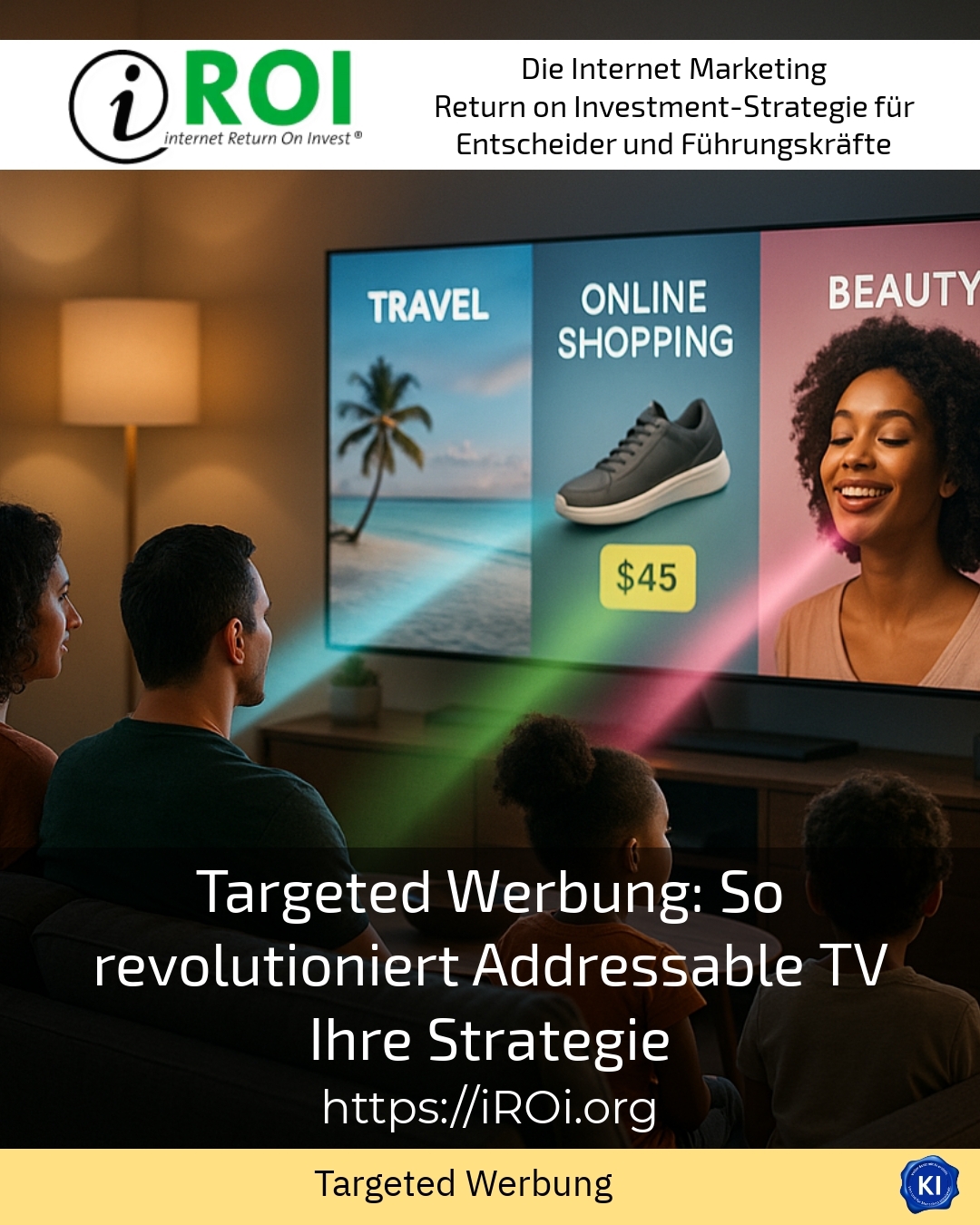Targeted advertising is becoming increasingly important because it enables companies to tailor their messages precisely to the needs and interests of individual target groups. Especially in the dynamic world of television, addressable TV is revolutionising advertising strategies by allowing personalised TV commercials and thus supporting the high relevance and efficiency of campaigns.
Targeted advertising on television: The evolution of addressable TV
Traditional television advertising reaches all viewers equally, regardless of whether the advertising message matches their individual profile. Addressable TV fundamentally changes this: adverts can be targeted at individual households or viewer groups based on data such as demographics, region and interests.
For example, a car brand can target its advertising at households with higher incomes and an interest in sporty vehicles, while a manufacturer of household appliances is more likely to appeal to younger families. In this way, advertising companies benefit from a precise approach that reduces wastage and optimises costs.
There are also exciting opportunities in the food industry: A regional organic supermarket can target its campaigns at households within a certain radius and with a corresponding affinity for sustainable products. Similarly, a telecommunications provider uses Addressable TV to advertise different tariff offers for frequent and occasional users on an individual basis.
The technical implementation and advantages of addressable TV in the context of targeted advertising
Addressable TV is made possible by modern technologies in smart TVs and set-top boxes that record household or user profiles and analyse them based on data. This means that paid advertising spots can no longer just be delivered on a programme-related basis, but individually.
The advantages are obvious: advertisers receive detailed feedback on reach, user interaction and key performance indicators. Companies in the fashion industry use this feedback to target precisely those consumers who are receptive to certain styles with changing collections. Insurance companies and financial service providers also adapt their advertising messages dynamically by analysing and using the interests and life situations of their target groups.
Another advantage is the combination of addressable TV with digital channels. For example, a company that offers smart home products can link TV adverts with accompanying social media campaigns. In this way, interested parties who have seen the TV advert are redirected to online offers - creating a networked customer experience.
BEST PRACTICE with one customer (name hidden due to NDA contract) A large food retailer used addressable TV to advertise special offers for different regions. While health-conscious and young target groups were targeted in urban areas, the focus in rural areas was on families with offers for basic foodstuffs. The response rates increased significantly and the campaigns were adapted more flexibly to local conditions.
How targeted advertising through Addressable TV can enhance your marketing strategy
Targeted advertising is best understood as a tool that accompanies marketing activities and strengthens customer relationships. Companies often come to iROI-Coaching with questions about optimal target group segmentation in order to make better use of existing data and optimise campaigns.
For example, we are helping a car manufacturer to advertise different models separately via addressable TV. For sporty vehicles, the advertising is aimed at younger, tech-savvy customers, while family models are advertised with a focus on safety and comfort.
Service providers from the tourism industry also frequently report on how they customise their offers. Depending on the season and destination, the target group can be dynamically adapted and targeted advertising enables them to achieve more up-to-date and accurate contact points with potential holidaymakers.
Another area is the consumer goods industry, where targeted advertising supports both impulse purchases and long-term brand loyalty. Companies adapt their adverts to regional preferences and consumer trends, thereby gaining a valuable competitive advantage.
Practical tips for integrating targeted advertising with Addressable TV
1. detailed target group analysis: Determine the socio-demographic characteristics, interests and media usage behaviour of your customers. Use internal and external data sources for this.
2. linking TV and digital channels: Combine your campaigns to pick up viewers again online after TV contact and extend the customer journey.
3. continuous monitoring: Evaluate the impact of the individual adverts and flexibly adapt the playout to current findings.
4. experiment with creative advertising formats, such as switch-in bumpers or interactive full-screen adverts, to better capture the attention of your target group.
My analysis
Targeted advertising via addressable TV opens up a wide range of opportunities for companies to increase their advertising impact and utilise budgets more efficiently. Precise targeting minimises wastage and increases customer accuracy. iROI-Coaching supports companies in the complex implementation process and helps to optimally design data-based marketing strategies.
The combination of personalised TV commercials and digital tracking creates an effective synergy that supports modern communication strategies. Practical examples from various industries show that targeted advertising is not just a theoretical concept, but an active lever for sustainable marketing success.
Further links from the text above:
Targeted advertising - Wikipedia
Addressable TV explained simply & quickly - Dreikon
What does targeting mean? - MSO Digital Wiki
Targeting - Definition - Online Marketing Practice
Intelligent targeting with the combination of TV - Adzine
For more information and if you have any questions, please contact Contact us or read more blog posts on the topic internet Return on Investment - Marketing here.
















